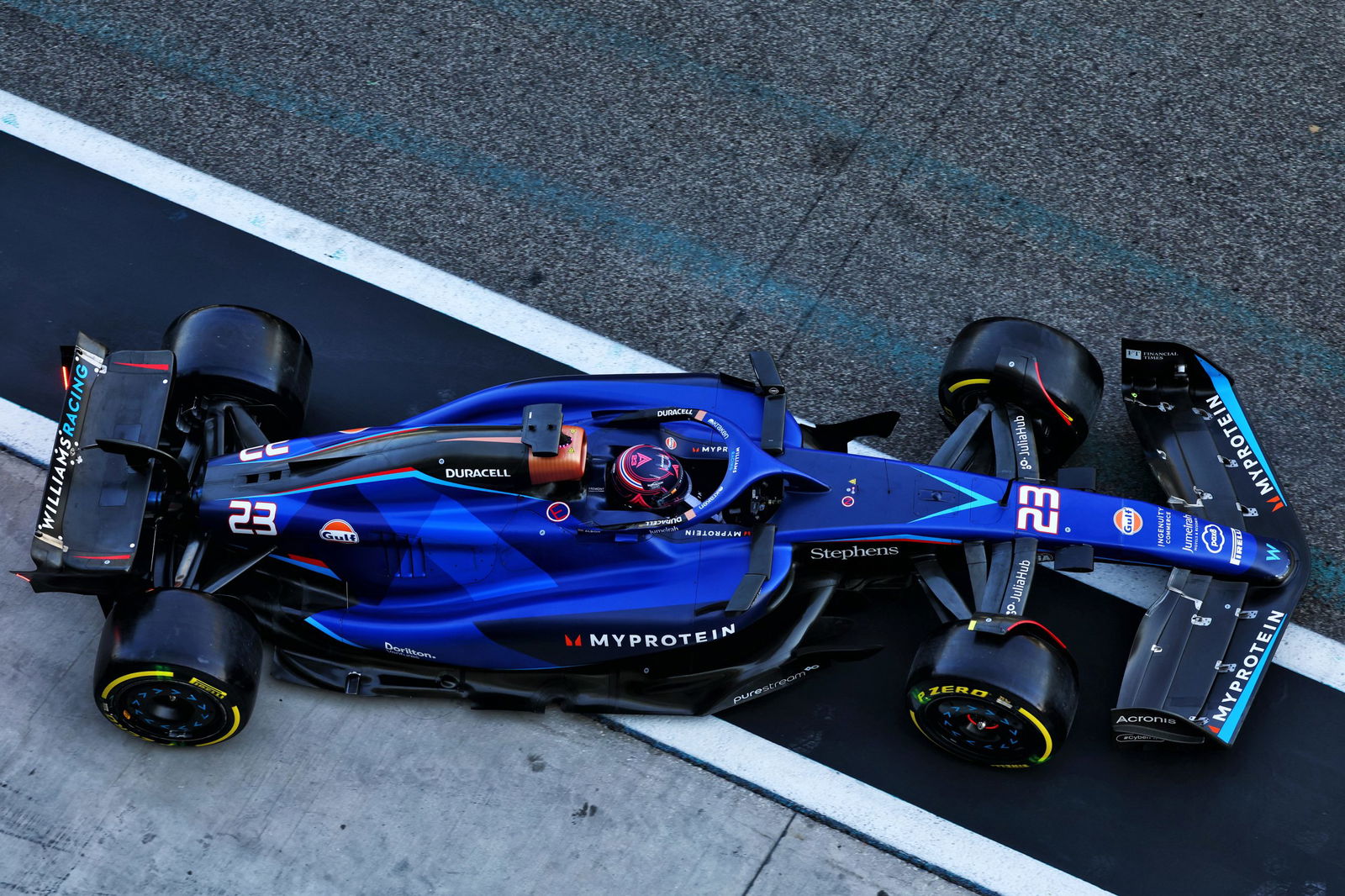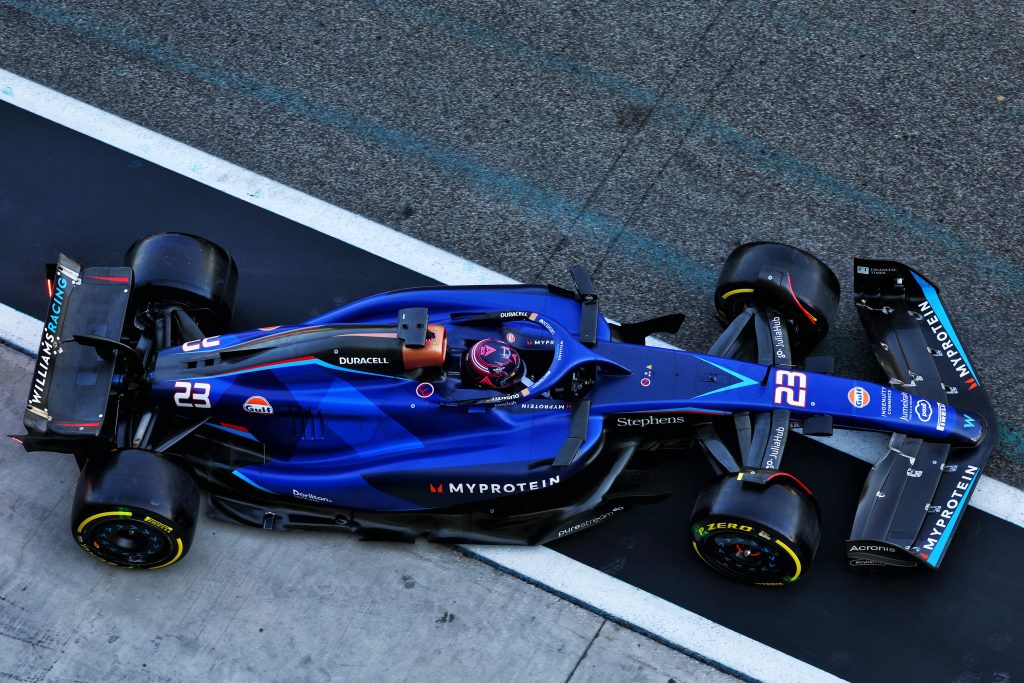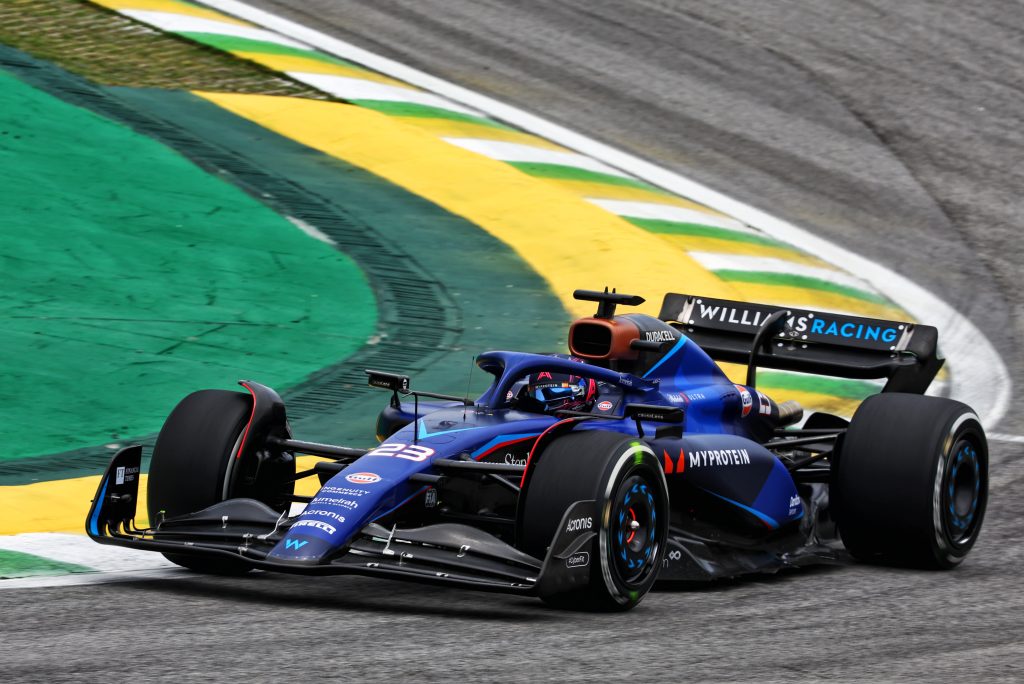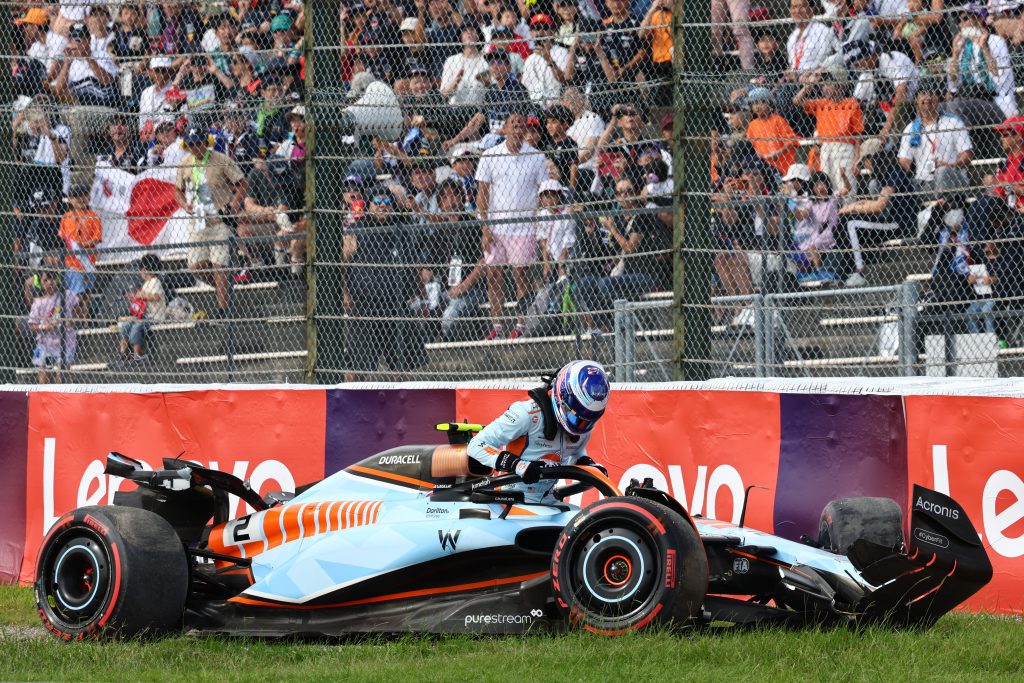

Management changes last winter saw the departures of Jost Capito and FX Demaison, and the arrival of James Vowles as team principal, a breath of fresh air for a stagnant team that had finished last in the constructors’ championship in four of the previous five years.
Vowles ushered in a more vibrant culture, implemented different ways of working, brought people closer together, and the results on track this past season echoed those changes and were a just reward as Williams finished seventh in the constructors’ championship, with 27 of those points from Albon.
Through it all, Albon and rookie team-mate Logan Sargeant were forced to contend with a car that delivered a rollercoaster ride in terms of its up-and-down performances which were, at times, exceptional, whilst on other occasions it struggled to get out of Q1.
The FW45 was complex, possessing “a big personality”, according to Albon, even after a major upgrade was delivered ahead of the Canadian Grand Prix, beyond which little was done to address its ongoing vagaries as Vowles opted to focus on next year and beyond.
Albon has confirmed the team ‘spent a lot of the year’ trying to understand the car’s issues, naturally citing the fact that “the more we can figure this out, the more it’s going to help us next year”.
“It (the car) has one way you need to drive it, and at the same time, there are some corners that suit it, others that don’t,” he said. “The peakiness of the car is pretty extreme in some places.”
Initially offering the Las Vegas circuit as an example, Albon said: “We ran pretty aggressive rim heating to get the tyres to work for the cooler track temperatures. It’s what gave us a great result – P5, P6 (in qualifying, after a 10-place grid penalty for Ferrari’s Carlos Sainz).
“But our car was not P5, P6 on paper, it was maybe P9, P10, and likely we compromised too much of the Sunday car for Saturday.
“We went into Sunday, and within three laps I was overheating the tyres, so that’s where you see these elements where it can happen, and exactly these kinds of issues we’re trying to fix.”
The underperformance of the car during the race resulted in Albon and Sargeant finishing a distant 12th and 16th.

Two other circuits over the second half of the season, at a time when the car had gone undeveloped since the summer break, underlined for Albon just where it was strong and weak.
“There are corners in Brazil (Interlagos), maybe four of them, where we lost a tenth and a half in each,” said Albon. “We couldn’t get around them, we couldn’t stop front-locking, and we couldn’t stop understeering off the track.
“At the same time, in Monza, we don’t have a limitation in the car. It doesn’t seem to hurt us because a lot of the braking is straight line. You don’t need to combine too much.
“So that’s where you see peaks because our car has good qualities and bad qualities. Our job next year is to get rid of them as much as we can.”
Albon claims those issues have been prevalent in the car for the “past five, six years”, with the hope that next year, inroads will be made.
It was only the application of more downforce that allowed Williams to shine at certain circuits, such as Monza, as the top speed of the car was striking compared to its rivals.
Corner entry, however, as indicated by Albon regarding Interlagos, was its bugbear.
Again highlighting Las Vegas as an example, he said: “We have to run so much front into the car, to get the car to turn into low-speed corners, that corners like…it was turns three, four, but technically it was turn two, a long right, we were far too oversteery.
“But that’s what we have to do for our car. There’s always a compromise you’ve got to achieve with it, and that happens in the race as well, so if you’re front graining, you’ve got to add even more front into the car to try to stop the front from sliding.
“But then in the high speed you’re so sharp, so unstable in entries, that you’re just slow, so we often find we are quite boxed in with how we have to drive the car, but also how we have to set up the car. Our window is narrow, and that’s why you see some tracks suit us, some not.
“We can go to tracks where either the wind is suiting us, like in Zandvoort, or if we go to tracks where, like Monza, we’ve always been quicker than our championship rivals.
“But then when you go to tracks where the wind doesn’t suit us, there’s a tailwind in a certain corner, or the track’s too hot, or the corners are longer than 90 degrees, like Barcelona, it exposes us. That’s where you get fluctuations.”
Albon suggests his first year with the team in 2022 stood him in good stead for the past season as the car went into the campaign relatively unchanged, so he was already aware of its handling characteristics.
“A lot of the reason why I think the performance on my side has improved is because last year I was learning every race weekend,” said Albon.
“I would go into it thinking ‘Wow! This corner doesn’t suit our car’, and I would spend a couple of sessions with my tools, and with my setup, trying to fix the issues.
“This year, going into every weekend, in FP1, I already knew the general balance problems of our car. I knew the strengths and weaknesses, and I’ve been able to react to the problems much more, understand them much quicker, and I’ve been much more confident compared to last year.”

Conversely, Albon feels it is why Sargeant struggled to get to grips with the car as it took a lot to understand and master it.
The young American was involved in numerous incidents, particularly in the middle of the year, which threatened his place on the grid and resulted in Vowles opting not to decide on his future until after the season had finished.
Over the closing races, Sargeant did show signs he was becoming more accustomed to the car’s nuances, with Vowles giving him the opportunity of a second season with the team.
“Our car is easier to overdrive than to underdrive,” said Albon. “It’s very easy to go too deep into a corner and lose your lap because of the front-locking problem. You have to have the experience to understand it.
“I look at myself from last year to this year, and I’ve improved, and that’s already having two previous years in Formula 1. That’s just me understanding the Williams car, so it is a difficult challenge.
“It’s about learning the weaknesses and the strengths and using that to race against other people. For example, this year, setting up the car for a particular corner before a long straight to make sure you’re not vulnerable and getting overtaken.
“Stuff like this made a big difference to our end results. Maybe it’s always not optimal what we’ve been doing this year, in terms of an A-to-B laptime, but we’ve been able to get the car across the line in a valuable position.”






















Discussion about this post